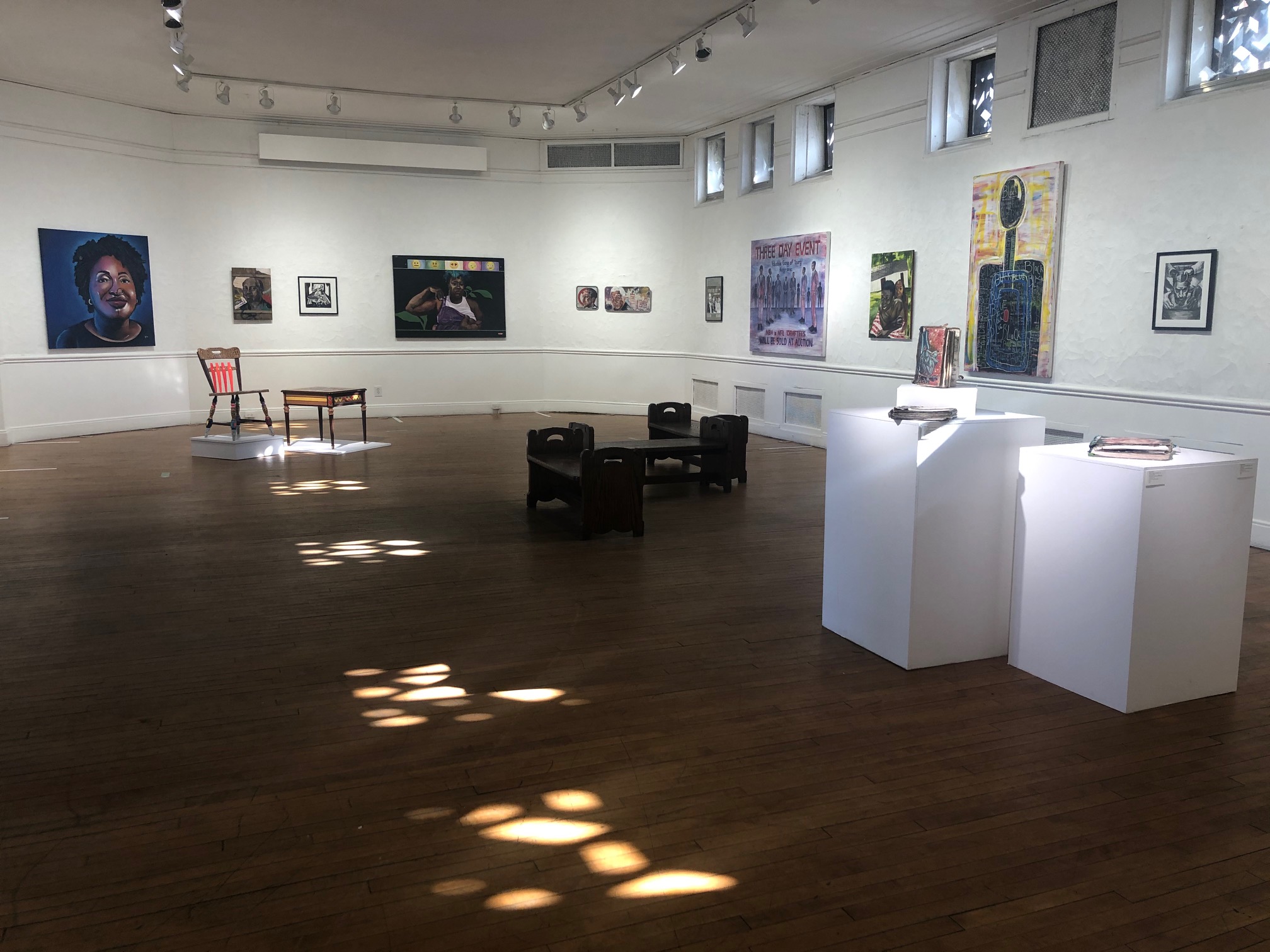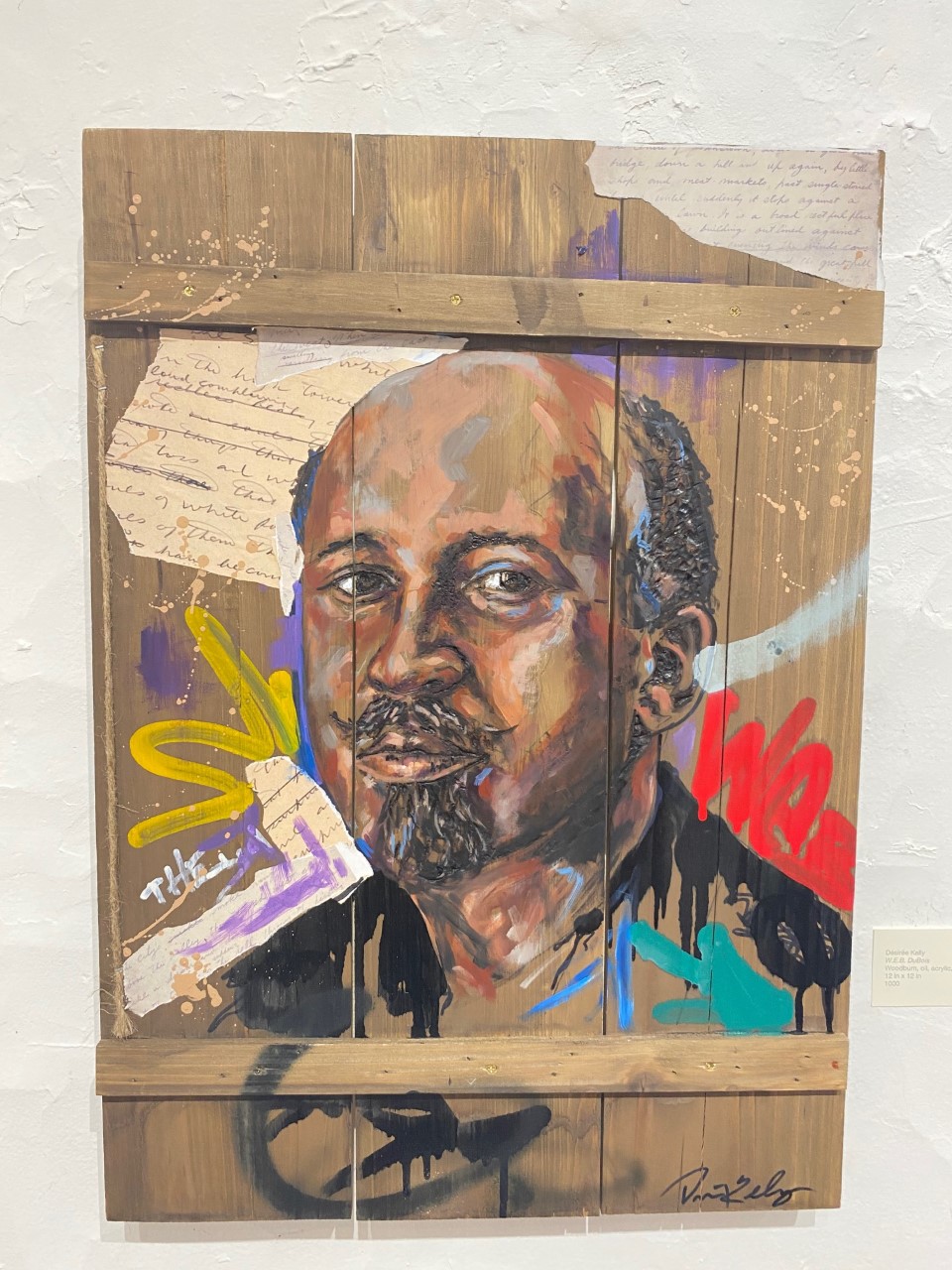At One of Detroit’s Oldest Art Institutions, A First — An All-Black Group Exhibition
“Souls of Black Folk: Bearing Our Truth” at the Scarab Club is a collection of works by African-American artists based on the essays from W.E.B. DuBois’ “Souls of Black Folk” from 1903 that focused on the dual identity of being Black and American.

When the writer and philosopher W.E.B DuBois wrote “The Souls of Black Folk” in 1903, his observations of being Black in America were prophetic. His series of essays looked closely at the concept of dual identity — being Black and being American.
Today, his words are the foundation of a new exhibit at the Scarab Club. It’s called “Souls of Black Folk: Bearing Our Truths.” It’s on view through March 6th.
According to Scarab Club executive director MaryAnn Wilkinson, “Souls of Black Folk” marks the first time an all-Black cast of artists has hosted an exhibition at the venue, which is one of the oldest art institutions in Detroit, founded in 1907. For decades, it was a white male-only club for discussions about art and art advocacy.

Curated by project manager and artist Donna Jackson, the exhibition includes works from 20 Detroit artists and range in emotion from harsh truths as in Yvette Rock’s “The Brutal Passage” and Carole Morriseau’s “The Healing Wall” to depictions of joy exuded in the life photography of Ralph Jones’ “We’re All Here” and Mandisa Smith’s mixed media visual “Black Joy.”
The works — both vibrant and dark, soul-piercing and resilient — speak to the complexity of Black lives. Dubois’ concept of twoness and the investigation of what it means to be Black and American is articulated through the visual arts medium, giving space and an entry point to further constructive conversations and thoughts on race and society.
“I really believe that there is something about taking information in through the sensory of seeing that is different than when we are trying to discuss things with one another — especially when it’s such a touchy subject,” says Jackson. “Visual art has this capacity to allow someone to quietly take it in and make a decision by themselves about what they’re seeing and what they’re feeling that discussions — which can get heated — can sometimes not allow.”
She adds, “To see it in this way, at least with this exhibit, to be told by different artists in their way and voice, I think that’s important to see this Blackness visualized from different Black people. Visual arts have a different kind of power that a discussion or words may not have to get points across.”
Click the audio player to hear the full conversation with artist Donna Jackson about “Souls of Black Folk” exhibit at the Scarab Club:
Trusted, accurate, up-to-date
WDET is here to keep you informed on essential information, news and resources related to COVID-19.
This is a stressful, insecure time for many. So it’s more important than ever for you, our listeners and readers, who are able to donate to keep supporting WDET’s mission. Please make a gift today.
